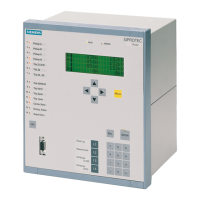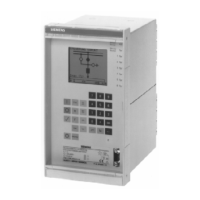Technical data
86
SIPROTEC PROFIBUS-DP - Communication profile
C53000-L1840-B001-03
5.2 Connection via the PSO module
The following technical data are independent of the configured mode (OLM V2 or OLM
V3, ref. to chap. 2.1.2) of the PSO module.
Connection fibre-optical interface, Rx and Tx, 820 nm, BFOC/2.5 (ST plug)
Protocol semi-duplex
Max. line length • 2000 m / 1.25 miles for point-to-point connections and glass fibre 62.5/125 µm,
• Redundant optical ring topology and glass fibre 62.5/125 µm:
− 9.6 kB/s ... 187.5 kB/s → 2000 m
− 500 kB/s → 1600 m
− 1500 kB/s → 530 m
• 2 m for plastic fibre
Baud rate max. 1500.0 kB/s
Max. number of
modules in one
optical ring
(depending on the
baud rate)
9.6 kB/s 140
19.2 kB/s 129
93.75 kB/s 81
187.5 kB/s 55
500.0 kB/s 41
1500.0 kB/s 41
Optical receiver
sensitivity
-24 dBm for glass fibre 62.5/125 µm
Optical budget min. 8 dB for glass fibre 62.5/125 µm
Status for
“no signal”
light OFF
Attention!
Please note for optical communication modules up to HW revision 3 and for op-
tical communication modules from HW revision 4 which work in the OLM V2
mode (ref. to chap. 2.1.2):
If the fibre-optical PROFIBUS modules of the SIPROTEC device operate together with
the OLM/G12 of the OLM V3 family then the compatibility mode of the OLM/G12 has
to be switched on (DIL switch S7 = 1).
The PROFIBUS interfaces of the fibre-optical modules of the SIPROTEC devices
support the redundancy function implemented in OLM V2 family which differs to the
implementation in the OLM V3 family.
With compatibility mode switched on, an OLM V3 behaves like an OLM V2.
An incorrect setting results in a faulty data transmission.

